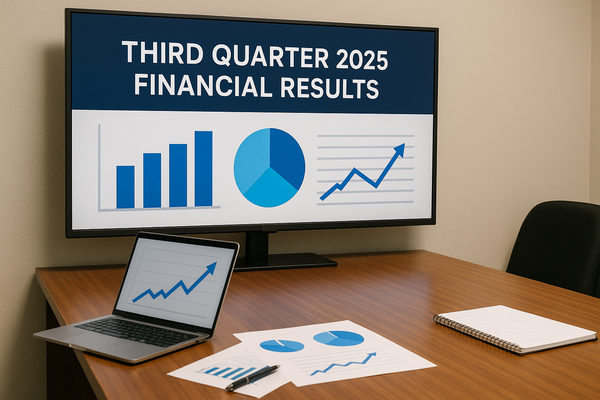
Roblox’s October 30 Q3 report will test whether rapid international growth converts into durable revenue. The company has posted outsized gains in APAC, with daily active users up 76% and bookings rising 75% in the region. Roblox shares are up more than 200% over the past year. That momentum matters now because investors are pricing in sustained global expansion ahead of the October release. In the short term, the report will drive volatility in RBLX trading as analysts adjust estimates and guidance. Over the long term, the key question is whether geographic scale translates to margins and monetization per user. Globally, big cloud and AI investments by Alphabet and Meta are lowering infrastructure costs for studios and platforms. Locally in the U.S., T-Mobile and Verizon’s recent capital moves — including T-Mobile’s $1.5 billion note redemption and Verizon’s 1.5% weekly share gain — are changing distribution economics for online games and streaming. Compared with the 2021 user surge, the current run is more international and tied to partner deals, making this quarter a milestone for investors and operators alike.
Roblox’s APAC surge and the near-term earnings test
Roblox’s growth in Asia-Pacific is the clearest driver of investor enthusiasm. Management reported APAC daily active users jumped 76% year-over-year, and bookings in that region climbed 75%. Those figures helped push RBLX stock more than 200% higher over the past 12 months. BMO Capital left an Outperform rating on Roblox ahead of the Q3 release, highlighting the company’s user expansion and bookings strength.
However, short-term market reactions will hinge on revenue recognition and bookings cadence in the October report. Roblox’s ability to convert bookings into recognized net revenue and to expand average revenue per daily active user (ARPDAU) in APAC will determine whether the rally holds. Trading volumes often spike around earnings; investors should expect larger intraday swings on October 30 when RBLX posts results and management updates guidance.
Take-Two’s rally and investor appetite for growth vs. execution risk
Take-Two Interactive has been a focal point for gaming investors. The stock climbed 4.6% in the past week and roughly 10% over the past month. Year-to-date returns stand at 39.5%, while the one-year gain is about 68.7% — roughly double the company’s performance since 2022. Those gains reflect confidence in franchise pipelines and pricing power.
Meanwhile, headlines about layoffs at a studio working on BioShock 4 have introduced execution risk. The market is pricing a premium: current multiples imply investors expect new releases to drive outsized cash flow. In this context, Take-Two’s recent share-price appreciation shows investors are rewarding potential upside even as near-term development disruptions create uncertainty. Analyst notes and short-term trading will likely react to any flesh-out of studio restructuring and release timelines.
AI and cloud investments driving infrastructure for games and platforms
Big tech capital spending is reshaping the cost base for game developers and platform operators. Alphabet announced a $4 billion data-center investment in West Memphis to expand capacity for cloud and AI workloads. Separately, analysts argue that AI could add nearly $1 trillion to Alphabet’s market cap over the next decade, reflecting expectations for higher-margin cloud services and inference revenue.
At the same time, CoreWeave’s $14.2 billion deal with Meta highlights hyperscaler demand for GPU capacity. That contract and an OpenAI private valuation of $500 billion after an employee share sale point to intense competition for inference and model-serving infrastructure. For gaming companies such as Roblox and Take-Two, lower latency, cheaper inference and more available GPU cycles can reduce production costs for AI-driven features and scale multiplayer backends. In addition, platform providers that secure long-term capacity deals can offer studios more predictable unit economics, affecting valuations and multiples across the space.
Distribution, streaming and carrier moves that shape monetization
Connectivity and distribution remain central to content monetization. Comcast closed at $30.40 in the last session, down 1.75% on the day, signaling pressure on legacy pay-TV and bundled revenues. At the carrier level, T-Mobile announced it will redeem the full $1.5 billion principal of Sprint’s 7.625% notes due March 1, 2026, on November 1, 2025. Verizon recorded a 1.5% weekly share gain, showing incremental investor confidence in its network strategy.
Altice USA’s stock jumped 6.5% after New York regulators approved its Lightpath reorganization plan, underlining how regulatory approvals can unlock value in fiber and enterprise assets. For companies that rely on fast, low-latency connections — cloud gaming platforms, live streaming services and multiplayer titles — these carrier and cable moves matter. Faster fiber rollouts and tower upgrades support higher average session lengths and better ad engagement, which feed directly into ARPDAU and subscription economics.
Cross-asset signals and what investors are watching next
Investors will read several quantifiable signals after Roblox’s Q3 print. Expect focus on bookings conversion rates, APAC ARPDAU, and guidance for monthly active users. Analysts will compare results to the prior big growth cycle in 2021 when user counts surged domestically; the new expansion is distinctly international and partnership-driven.
Meanwhile, watch capital flows into AI infrastructure. Alphabet’s $4 billion project, CoreWeave’s $14.2 billion deal, and OpenAI’s $500 billion valuation are tangible numbers investors use to size addressable markets for cloud-native games and AI-driven content. On the distribution side, Comcast’s $30.40 close and Altice’s 6.5% jump show that network operators are still critical levers for monetization. Together, these metrics will shape multiples and analyst sentiment across public gaming and platform names in the coming weeks.
This commentary is informational only. It does not offer investment advice or make forecasts.












